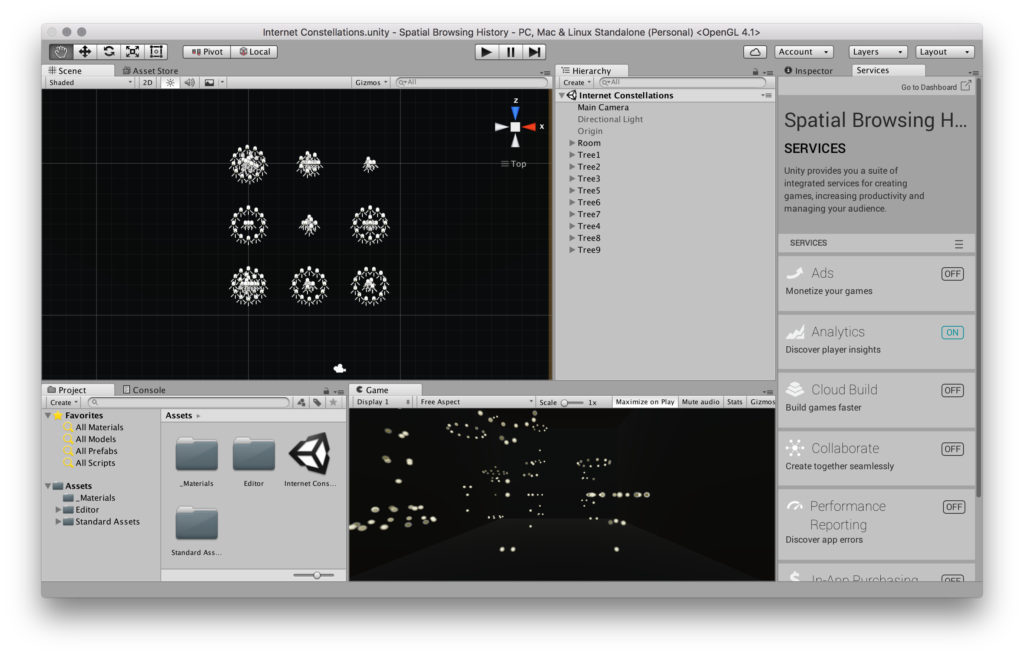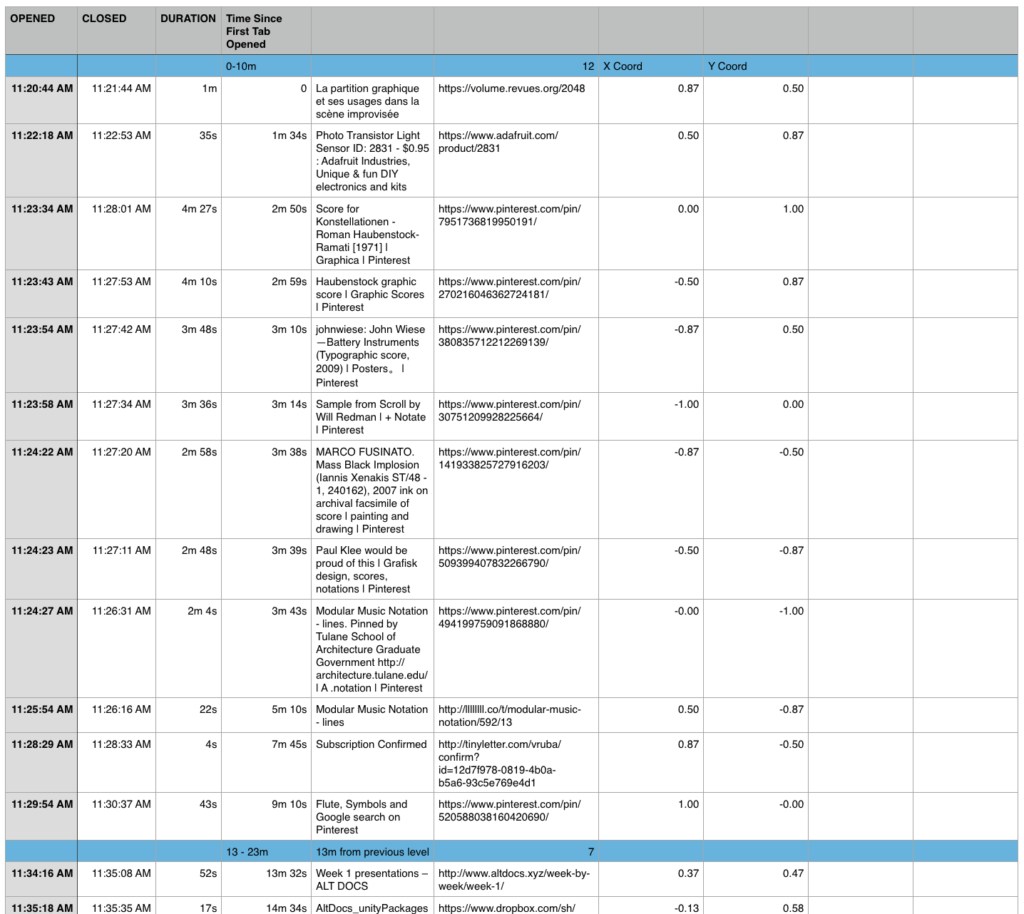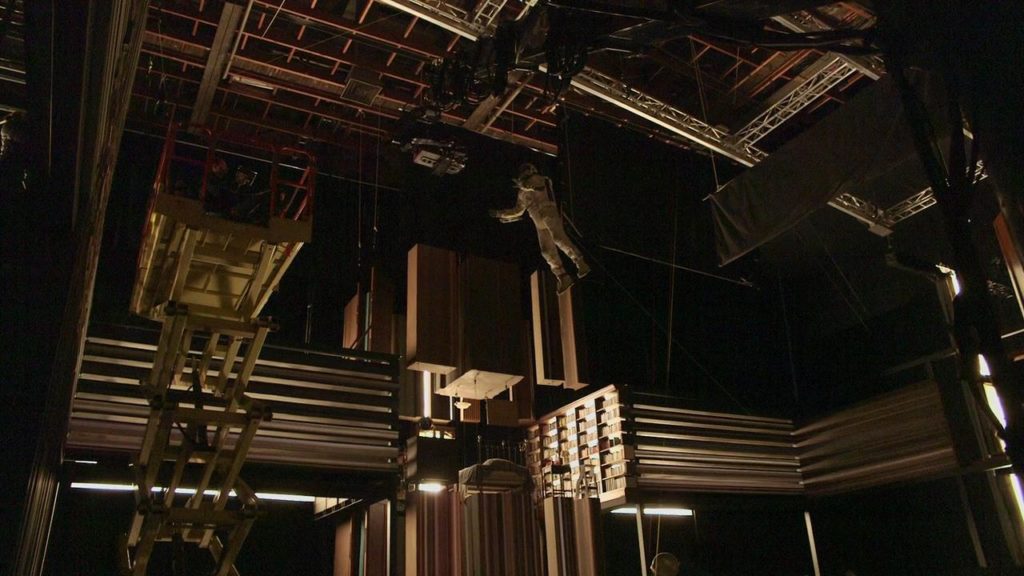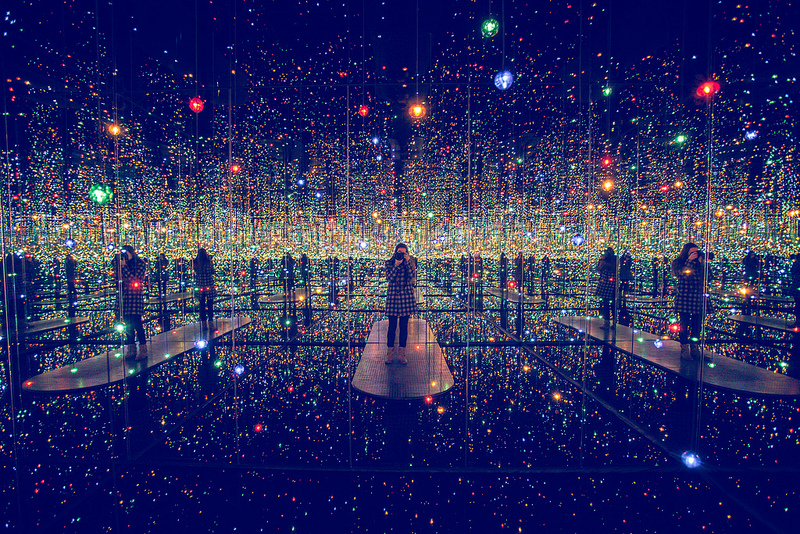We often discuss the browsing the internet with language similarly used in descriptions of exploring physical space. We get lost in the links, we forget how we ended up somewhere, websites leave breadcrumbs behind in the form of cookies. While the browser history indicates a very linear sequence of the websites visited, I imagine my perusal of the internet more as a web: one link branches to three other links and from each of those I open up three, four, five more.
In translating my recent browsing history, I was curious about the possibilities of spatializing this archive; what is the benefit of space as opposed to a two-dimensional infographic? 1
The proposal is a light installation. A black room is lit only by a grid of constellations, each representing the time-relationships of websites visited in a single day. The room itself recedes and its hard edges dissolve in response to the “endlessness” of the internet. Furthermore, the spatialization and distribution of the lights into a grid removes the linear sequencing of the recorded web browsing. They form clusters and relationships, rather than a strict lineage. Lastly, through representing websites in space, how one “experiences” the story is a question of their body, and how they navigate within the physical space as opposed to an interaction of scrolling, clicking or typing.

Fine Details
I wrote an AppleScript to record when I opened a new link and when I closed a link. I also catalogued the URL and title of the webpage, but mainly used that for reference.

Through spatializing the data, I was less interested in the specific content as opposed to the opening and closing of tabs over time. I mapped the links in relation to when I opened my first tab of the day. Anything opened within 10 minutes of that formed the lowest ring. The second ring was then vertically located in relation to how much time had passed since that first link, and again cluster anything within 10 minutes beyond that.

Precedents
Christopher Nolan’s 2014 film Interstellar conceives as time as a fifth dimension through which the bulk beings can communicate using gravity. Every moment in time — the past, present and future — are all accessible and manipulatable within the Tesseract. An article by Colossal discusses how the tesseract was constructed as a physical set with which the actors could interact rather than a digital effect added in post-production.

Borges’ Library of Babel
”I declare that the Library is endless. Idealists argue that the hexagonal rooms are the necessary shape of absolute space, or at least of our perception of space…Let it suffice for the moment that I repeat the classic dictum: The Library is a sphere whose exact center is any hexagon and whose circumference is un attain able.”
Yahoo Kusama’s Infinity Room

Very thoughtful process and interpretation of the data spatially. It’s interesting to think about browsing activity as less about content and more related to time and changing how we define time – in this sense, the idea of a light sculpture is quite fitting.
This is a really great use of Unity for prototyping a physical environment that we’d love to see you take further on future assignments. Really great work.